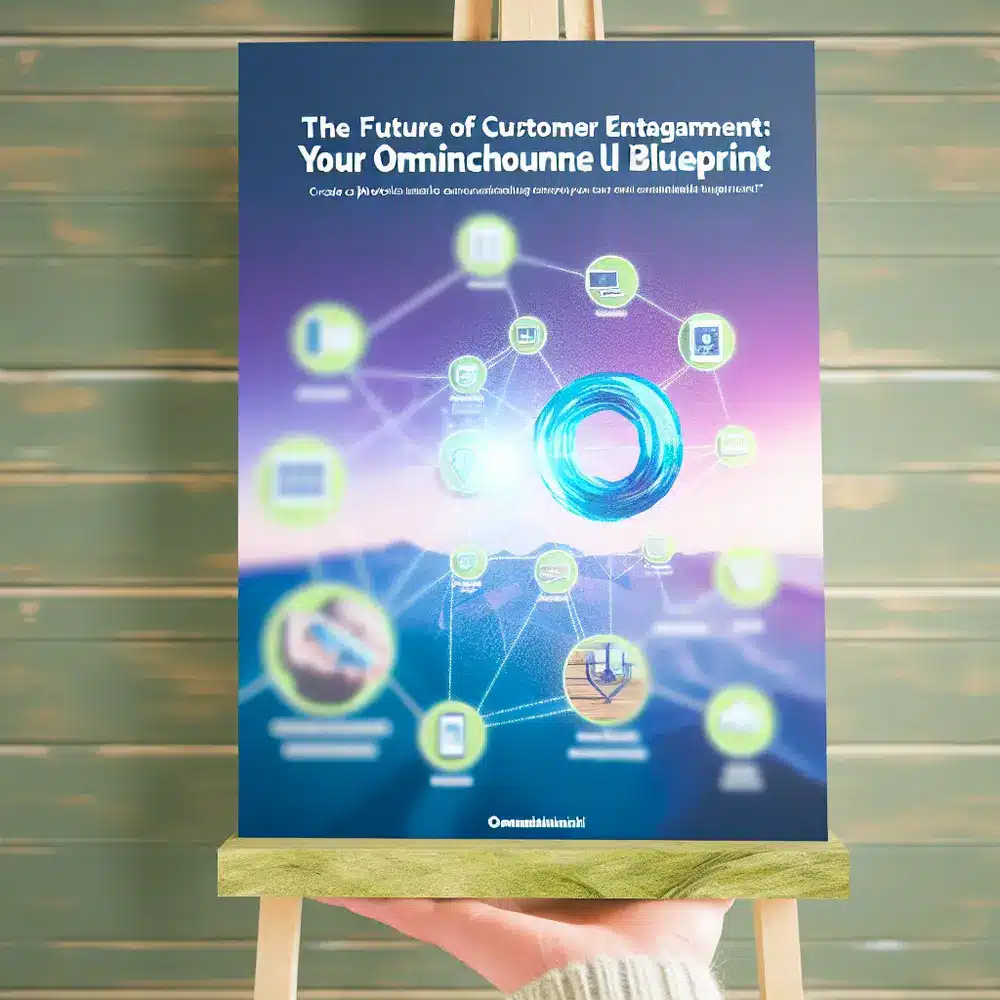As businesses evolve in an increasingly competitive landscape, customer engagement emerges as a pivotal focus area. You face the challenge of meeting rapidly changing customer expectations while ensuring every interaction feels seamless. To thrive, you must adopt strategies that not only fulfill current demands but also anticipate future needs.
Customer expectations encompass a desire for personalized experiences, immediate responses, and effortless interactions across multiple channels. Embracing an omnichannel approach allows you to meet these expectations. By providing a cohesive and integrated customer journey, you can enhance satisfaction and loyalty.
With rapidly advancing technologies like AI and machine learning, you have the opportunity to analyze customer data effectively. This capability enables you to tailor communications and services, ensuring they resonate with your audience. The time is now to redefine your customer engagement strategy for success.
Understanding the Future of Customer Engagement
The omnichannel strategy is essential for businesses to stay competitive. As customer expectations evolve, organizations must adopt a vision prioritizing seamless interactions across various channels. This approach not only meets customer needs but anticipates them, creating a personalized experience.
Imagine how the fictional company, DigitalWave, utilized AI to analyze customer data. By identifying trends and preferences, they tailored communications, resulting in a 25% increase in customer retention. This proactive approach solidified their brand perception and customer loyalty.
Integrating channels like social media, email, and live chat ensures a cohesive customer journey. Customers can easily navigate between platforms, expecting consistent service. When VisionTech deployed an omnichannel service platform, they reduced customer inquiry response time by 40%, significantly boosting satisfaction rates.
Aligning internal teams around a common vision is crucial for customer engagement. The success of the Strategy Group depended on collaboration between marketing, sales, and customer support. This collaboration not only improved efficiency but also created a unified message that resonated with customers.
In conclusion, the future of customer engagement relies on a robust omnichannel strategy. By leveraging advanced technology and promoting team collaboration, your organization can create lasting customer connections and outperform competitors.
The Omnichannel Blueprint: Key Components for Success
To implement an effective omnichannel strategy, businesses must focus on data integration. Companies like StoreSync successfully harnessed consumer insights from various touchpoints, leading to a 30% increase in relevant interactions. Understanding customer preferences allows for real-time adjustments to enhance the overall experience.
Maintaining channel consistency is critical for a successful omnichannel approach. Consider how HealthCare Pro established standardized communication guidelines across social media, emails, and in-person interactions, resulting in a 20% decrease in customer confusion and disengagement.
Technology’s role is significant in optimizing customer engagement. RetailMax leveraged an omnichannel service platform, enabling their teams to access comprehensive customer histories. This accessibility resulted in a 35% improvement in response times and an overall boost in customer satisfaction.
Investing in employee training is paramount for delivering a consistent experience. When GlobalTravel equipped their customer service team with omnichannel tools, they observed a 50% increase in customer trust, as team members effectively addressed inquiries across platforms.
Regular evaluation of omnichannel strategies is essential to adapt to changing customer needs. A continuous feedback loop allows businesses like EduConnect to refine their approach, keeping them ahead of the competition and relevant in a fast-paced market.
Crafting a Vision for Engaging Customers
Creating a seamless experience across touchpoints is vital for future customer engagement. Businesses must envision interconnected interactions that elevate overall customer experience and satisfaction. The vision should prioritize real-time communication tools that enhance engagement.
Example Tech utilized data analytics to understand consumer behaviors deeply. By proactively adjusting their strategies, they successfully transitioned from reactive to proactive communication, enhancing relationships and loyalty levels significantly.
Training employees to embody the omnichannel service philosophy is equally important. Empowered by the right tools, teams from ConnectFresh could deliver exceptional experiences consistently, securing a 40% improvement in customer feedback scores.
This comprehensive approach establishes a forward-thinking culture that adapts to changing consumer landscapes. As businesses craft their engagement blueprints, integrating advanced omnichannel solutions will transform how brands connect with customers.
Strategic Approaches to Omnichannel Engagement
Creating a cohesive omnichannel engagement strategy requires understanding customer behavior across platforms. Data-driven insights empower businesses to tailor their approaches for customer satisfaction and loyalty, leading to enhanced relationships.
Futuristic Trends adopted AI and machine learning within their customer engagement framework. This adoption allowed for anticipatory service, leading to a 30% increase in personalized interactions and deepened connections with clients.
Cross-department collaboration is vital for executing a successful omnichannel strategy. By fostering teamwork, companies like MarketSphere effectively aligned their sales, marketing, and support efforts, enhancing customer experiences and driving innovations.
Training programs play a key role in empowering employees. With ongoing training, the staff at FinTech Solutions navigated multi-channel environments proficiently, leading to a 25% boost in customer satisfaction metrics.
Ultimately, embracing omnichannel mindsets equips organizations for long-term growth and success. Flexibility and innovation provide a lead over competitors, ensuring a promising future in customer engagement.
Case Studies: Successful Omnichannel Implementations
Businesses like GlobaRetail have demonstrated that comprehensive omnichannel strategies enhance customer satisfaction while improving operational efficiency. By analyzing their integration of online and in-store experiences, they reported a 25% increase in customer engagement.
Financial Services Elite adopted an omnichannel support approach, resulting in a 30% increase in customer satisfaction scores after they implemented a system for centralized communication across various channels.
Streaming Service Pro streamlined customer interactions through proactive outreach via preferred communication channels, reducing service call volumes significantly. This transition directly resulted in a 15% boost in customer retention rates.
A major airline integrated their booking and customer support systems, providing continuous flight updates through mobile and social media. This strategy resulted in heightened customer retention rates and decreased anxiety associated with travel disruptions.
Examining these implementations showcases how an omnichannel strategy can yield substantial results, positioning businesses to elevate customer experience while meeting and exceeding expectations.
Challenges and Solutions in the Future of Customer Engagement
Integrating diverse communication channels presents challenges to businesses. You must establish a consistent customer experience across all touchpoints. Robust omnichannel service platforms can serve as centralized hubs, facilitating data sharing and enhancing engagement.
Agility is essential in the omnichannel landscape. Organizations can stay ahead of shifting consumer behavior by incorporating flexibility into their strategies. The ability to iterate quickly is crucial for competitive advantage in a fast-paced marketplace.
Implementing strict data security measures that prioritize customer privacy presents another challenge. Transparency in data handling builds essential trust, a cornerstone for effective engagement moving forward.
Training teams in an omnichannel approach is necessary for effective service delivery. Focused training empowers staff with the skills to address customer inquiries efficiently and fosters a customer-centric mindset.
In summary, overcoming challenges in customer engagement requires a strategic approach. By addressing concerns systematically, you can create an inspiring vision that exceeds customer expectations and drives sustainable growth.
The Role of Technology in Shaping the Omnichannel Experience
Technological integration is reshaping customer engagement by facilitating seamless interactions. Businesses must prioritize an effective omnichannel strategy that harnesses data analytics and innovative tools to strengthen customer relationships.
Brands leveraging data integration platforms gain vital insights to enhance customer engagement. For instance, Consumer Insights utilized data mining and predictive analytics, ultimately boosting customer loyalty by 30% through tailored experiences.
Cloud-based solutions uniting various service channels play a pivotal role in enhancing responsiveness. With centralized operations, businesses like TechConnect reduce response times dramatically, creating cohesion in customer interactions.
Automation also enhances customer experience, as exemplified by SmartSupport. Their implementation of chatbots improved initial response rates by 50%, allowing human agents to focus on more complex matters.
Emerging technologies, such as AI and AR, redefine customer engagement. AI facilitates real-time analysis for personalized interactions, while AR offers immersive shopping experiences that augment customer relationships.
Measuring Success: Key Performance Indicators for Omnichannel Engagement
Understanding key performance indicators (KPIs) is essential for measuring success in omnichannel engagement strategies. KPIs provide the insights needed to refine approaches and enhance customer experiences.
Customer satisfaction score (CSAT) reflects immediate feedback on interactions. High scores inform businesses about their strategy’s effectiveness, helping them identify strengths and areas for improvement.
The Net Promoter Score (NPS) evaluates customer loyalty. High NPS scores indicate effective engagement strategies that inspire repeat business and positive word-of-mouth marketing.
Customer effort score (CES) measures the ease of interaction across channels. Streamlining processes can significantly lower CES, leading to improved retention rates.
Conversion rates reveal which channels effectively drive sales. By analyzing conversion data, leaders can optimize resource allocation and enhance their omnichannel visions.
Conclusion: Your Path to an Omnichannel Future
The customer experience landscape is changing, and businesses must prioritize an omnichannel strategy. This integrated approach enhances interactions and deepens customer loyalty, establishing more profound relationships.
By focusing on seamless communication across channels, your engagement model should ensure every point of contact complements one another. This convergence simplifies the customer journey, making every interaction personalized and relevant.
Advanced technologies enable proactive capabilities, understanding customer needs comprehensively. Companies need to invest in support platforms that facilitate real-time data analysis for exceptional service delivery.
Your strategic focus on cultivating an omnichannel ecosystem will exceed customer expectations while generating tangible value. Join the path to enhanced customer engagement with our Omnichannel Service Platform.









